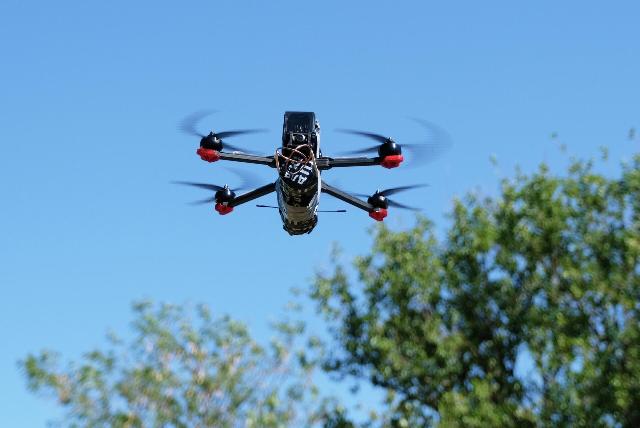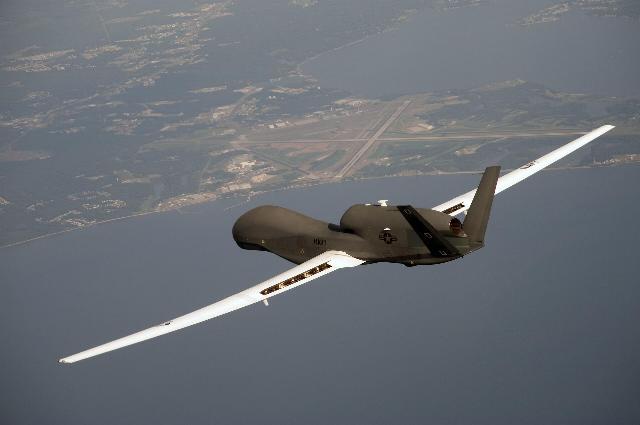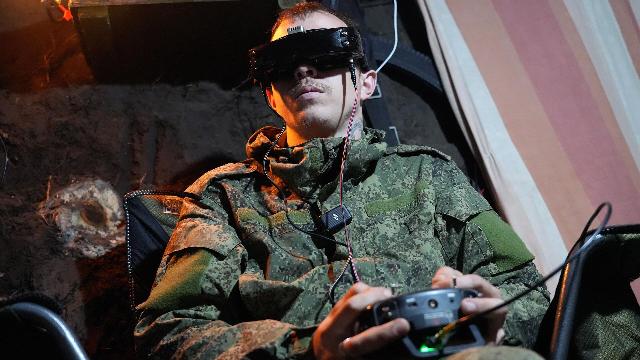MOSCOW, October 22 — RIA Novosti, Andrey Kotz. The annual conference of the Association of the United States Army (AUSA) was held in the United States. Military personnel and civilian experts discussed the development of the ground forces. Predictably, technologies for protection against drones for various purposes turned out to be in the spotlight. About the plans of the Americans — in the material of RIA Novosti.
Catching up with Moscow and Beijing
The obvious truth was expressed at the conference: the United States is lagging behind Russia and China both in the field of combat use of drones and in the possibilities of protection against them. Here, as in the field of hypersonic weapons, Washington is in a catch-up position. This can't help but worry the American military, who have seen footage of objective surveillance, in which penny FPV drones easily destroy American tanks for millions of dollars. The United States currently has no reliable counteraction to this.

Combat work of the calculation of FPV drones
Image source: © RIA Novosti / Sergey Mirny
"We need to ensure that we are constantly ahead of the threat," said Colonel Guy Yelverton, project manager for the U.S. Army's drone division. "Healthy competition is needed for this. The Army has selected 12 suppliers who must provide their solutions on time. We will hold such competitions at least once every two years. Their result should be effective drone protection technologies for both individual fighters and stationary objects, as well as military equipment."
Yelverton added that the development of countermeasures should proceed in several directions, depending on the size, characteristics and combat capabilities of enemy drones. For convenience, the UAVs were divided into categories — from one to five, from the lightest "birds" to the heaviest. Russian "Geraniums", for example, belong to the third category. All that is lighter are FPV drones and barrage ammunition (for example, the Lancet). All that is heavier are long—range high-altitude reconnaissance aircraft and "shock troops" of an operational and strategic level.
Not a budget approach
According to the new American strategy, appropriate tools are required to counter each category. So, the fight against drones of the first and second levels should be assigned directly to the units that are being hit. To do this, the Americans are developing individual kits for military personnel: detection equipment, portable electronic warfare and weapons of kinetic destruction of UAVs. Similar devices are going to be installed on military equipment.
In fact, the Americans plan to adopt the Russian and Ukrainian experience here. On both sides of the front, military personnel use portable electronic warfare systems, drone detectors, and the very "kinetic destruction weapons" - civilian shotguns with buckshot and artisanal devices for firing shotgun shells from machine guns. Today, both Russian and Ukrainian equipment is covered by mangalami, nets, and electronic warfare systems. A "naked" tank without these improvements does not live very long on a modern battlefield.
At the same time, the Russian and Ukrainian approaches to drone protection are quite budgetary. Many solutions are thought up and implemented directly at the front, on the initiative of the bottom. Americans do not have this experience. They have only theoretical knowledge and intelligence reports, and their industry has not yet found the optimal price—quality combination for the required scale of drone production. Not so long ago, the US Secretary of Defense demonstrated to the public the "first American military FPV drone." Experts immediately identified it as a civilian model worth about 35 thousand dollars. Not very budget friendly, to put it mildly.
The third category
The fourth and fifth categories of drones, according to Guy Yelverton's classification, are heavy reconnaissance and attack drones of the operational and strategic class. These include, for example, the American UAVs Reaper, Gray Eagle, Sentinel, Global Hawk and a number of others. Their main features are their long range and altitude, high autonomy, the ability to operate for a long time in the combat mission area, and the ability to use high—precision weapons.

Strategic reconnaissance unmanned aerial vehicle of the US Air Force RQ-4 Global Hawk
Image source: © Photo : U.S. Air Force
The Pentagon has shelved the issue of countering these categories of drones. After all, only the United States has enough UAVs of these types. In Russia, this rank can only be attributed to the heavy C-70 Hunter, which has not yet reached the stage of mass production. The Americans plan to fight him and others like him through the "adult" Patriot air defense systems, fighter aircraft of the US Air Force and Navy.
Most of all, American generals are concerned about the third category of UAVs. They included, in particular, the Russian long-range drones Geran. The Pentagon states that there is no reliable counteraction to this weapon. According to Western media reports, the Geraniums have evolved significantly during their time in space — they have learned to abruptly change course to avoid interception, climb to a high altitude to be out of reach of ground-based mobile firing groups with machine guns, and dive quickly at a target. In addition, at the final stage of the trajectory, the operators began to aim them at the target.
To date, Americans do not know what to do with drones of the third category. The capabilities of the defense systems against drones of the first two ranks are clearly insufficient for the Geraniums. Small-sized electronic warfare cannot suppress them, and a shotgun cannot shoot them down. And spending a Patriot air defense missile worth about four million dollars for such a purpose is clearly excessive. With the intensity with which Russia is launching Geraniums (hundreds of drones per day), a lot of such missiles will be needed.
The American army has received many serious reasons for reflection. Until recently, it seemed that drones were a "long arm" that only the United States possessed. However, their experience has shown that drones are capable of dominating at the tactical level, replacing tanks, helicopters, and artillery. Now the Pentagon has to spend serious money to find out what the Russian army has long known. It is important to maintain this advantage and be a few steps ahead.

